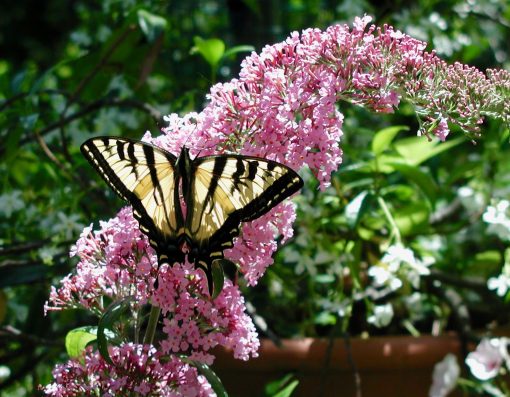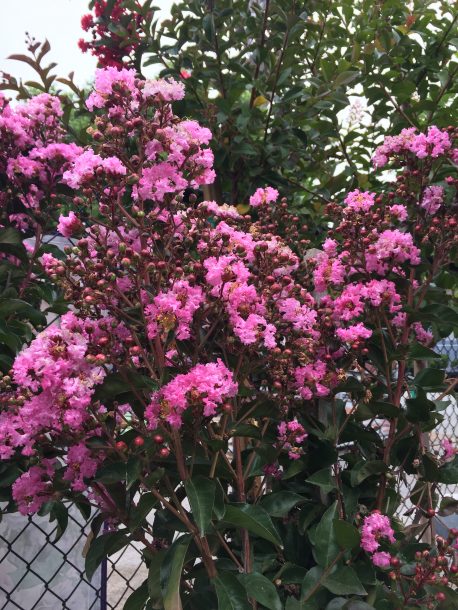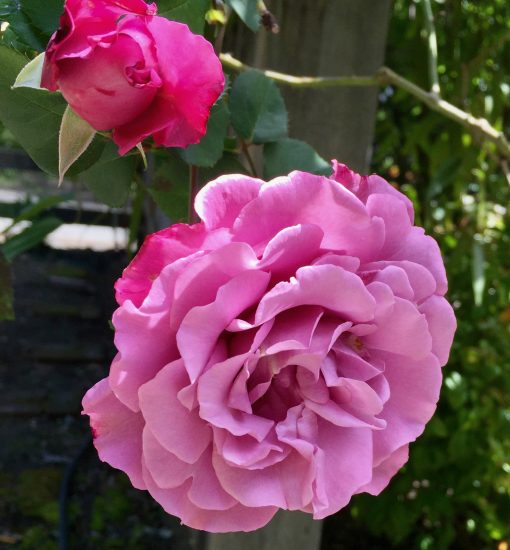
Just when I thought this summer wasn?t going to be as hot as last, the weather changed. With so many different microclimates in our area, one can always find a cool spot, though. Where did the term ?Dog Days of Summer? come from?
The Romans associated the hot weather from 20 days before to 20 days after the conjunction “the dog days of summer” because it coincidentally fell at the time of year when it was very hot. This falls between July 24th and August 24th.The Old Farmer?s Almanac uses slightly different dates but the Dog Days of summer are definitely here.
The name “dog star” comes from the ancient Egyptians who called Sirius, the dog star, after their god, Osiris. His head in pictograms resembles that of a dog. When the Dog Star rises in conjunction with the sun some felt the combination of the brightest luminary of the day – the sun – and and brightest star of the night – Sirius – was responsible for the extreme heat experienced during the middle of the summertime. Since Sirius is the brightest star in the night sky it’s reasonable to guess that it adds some heat to the earth but the amount is insignificant.
We now know the heat of summer is a direct result of the earth’s tilt, but now you know? the rest of the story.
As summer rolls along you may become more aware of the different microclimates in your garden. With the drier and hotter weather some of your plants that used to get along just fine might be showing signs of stress. Taking note of these changes in the performance of your plants is what makes for a more successful landscape. When the weather cools towards the end of September you will want to move or eliminate those plants that aren?t thriving. Be sure to keep a thick layer of mulch on the soil around your plants to conserve that precious water you do allocate to each of your irrigation zones.
Deadhead flowering annuals and perennials as often as you can. Annuals like marigolds, petunias, zinnia and cosmos will stop blooming if you allow them to go to seed. The same is true of repeat blooming perennials like dahlia, scabiosa and lantana.

One of my favorite plants of summer is Crape Myrtle. They bloom in the summer when we are outside more. Their fall foliage is spectacular and the bark is beautiful during the winter. Plant growers have hybridized new varieties that are more mildew resistant and smaller in size. I have my eye on a variety called Purple Magic that grows 6-10 feet tall and as wide. You can keep it as a multi-stemmed shrub or select several stems to train as a small tree. I also like Rhapsody in Pink, a slightly taller variety and Dynamite with its red flowers and orange-red fall color.
Swallowtail butterflies are regular visitors to the garden at this time of year. They especially like butterfly bush as well as zinnias and many other flowers. They are easy to photograph if you move slowly.
Fertilize shrubs lightly one last time in August or early September. All shrubs, especially broad-leaved evergreens such as rhododendron, pieris, camellia, hebe, need to calm down, stop growing and harden off to get ready for the winter cold. Some plants have already set next year’s buds.

Roses especially appreciate a bit of fertilizer now, encouraging them to bloom another round in September and October. To keep them blooming make a habit of pinching and pruning off old flowers. Always cut back to an outward facing branchlet with five leaves. There are hormones there that will cause a new rose to grow much sooner than if you cut to one with only three leaves.
